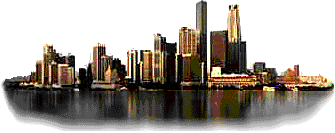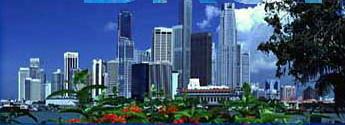
 ... a small little country located on the map Atlas
... a small little country located on the map Atlas
It was founded by SIR STAMFORD RAFFLES and it is labelled as the Green Lion City for her beauty & clean island as many have commented.
From Fishing Village To Supercity !
" Have you been here ? "
When Sir Stamford Raffles claimed Singapore for the British East India company in 1819, it was nothing but a swampy, thickly jungled island populated by handful of fishiermen and sea gypies.
Today it is a vibrant, modern city-state of 2.8 million people - one of Asia's economic "dragons" and the regional centre for trade, transport, banking, tourism and communications.
Singapore's success is due mainly to its ideal location on the busy sea routes between East and West. For centuries before Raffles' arrival the island had witnessed the passage of Chinese junks, Buginese prabus, and Arab thows and Indian vessels of every shape and size.
History records that in the 14th century the island was known as Temasek or "Sea Town". As legend has it, the place was renamed Singa Pura or "Lion City" after a visiting Sumatran Prince encountered a strange-looking animal he mistook for a lion.
Raffles' arrival merely formalised Singapore's status as a port of international reown as merchants of every race, colour and creed were quickly drawn to the island. By 1911, Singapore had a population of 250,000 people of 48 races, mainly from China's southern provinces, Indonesia, Malaya and India, speaking a total of 54 languages.
For many years, Singapore was considered Britain's key defence base in the Far East. But the myth of the island's impregnability was shattered when it fell to the Japanese in 1942.
When the Japanes occupation ended in 1945, Singapore became a British Crown Colony. But the impetus for independence led to self-government in 1959 as part of the Malayan Frederation. Singapore left to become an independent Replublic.
In the years since independence, the Republic has undergone astonishingly rapid growth and change.
This tiny tropical island of 646 square kilometres has the world's busiest port and its airport is consistently voted the world's best.
It is one of the world's majoy oil refining and distribution centres, a majoy supplier of electric components and a leader in shipbuilding and repairing. It is also an important communications and financial centre for Asia, with more than 140 banks.
Despite rapid growth and soaring skyscapers, Singapore has retained and restored its most charming areas, and remains one of the cleanest, greenest and safest cities anywhere in the world.
Its excellent facilities and transport, superb hotels, wonderful food, fascinating cultural contrasts and wealth of attractions draw an ever-increasing number of tourists.
Some 7 million visitors a year come to Singapore, making it one of the few countries in the world to receive more tourists than its resident population.

Well, we do have a number of small islands as you can see .....
& the most famous of all these islands,
~ SENTOSA ~
is the most attractive one to both
tourists and the locals !
Wanna guess which part of the island I'm staying?
Yes, it's on the northwest side of Singapore ...
CHOA CHU KANG
where the location is so near to the neighbourhood country
~ MALAYSIA ~
Ohh ... the map also shows the link from Singapore (Woodlands) to Malaysia (Johor Baharu).
" Whereabout is the 'city'-town ? "
The map above shows most of the place-of-interests in Singapore.
From hotels/shopping/food/entertainments/mores in Orchard area,
traditional Chinese arts & paintings in Chinatown,
goodies from the Little India,
round Raffles City are mainly commercials & bussiness center,
where the asia tallest hotel stands too -
The Westin Stamford Hotel
& one of the historical hotels in Singapore -
The Raffles Hotel
which located in this map.
As for the yuppies, places like the East Coast Park & the Marina South (near the bay) are the most happening/hip & gathering fun places!!

" Not forgetting ME too !! "
where people call 'me' the MERLION in Singapore
& you can locate 'me' at the Clifford Pier.
So much more that I've yet to introduce them to you.
CLICK HERE
to find out more !
| LinkExchange Member |
** [Search] [AboutMe] [PhotoAlbum] [HomePages] [HomeTown] [CooLStufF] [Curious!?] **
** [Sign My GuestBook] [SINGAPOREAN PoTLucK] [View My GuestBook] **
 PAGE ME
PAGE ME 
 TELL ME
TELL ME 
![]()
This page hosted by ![]() Get your own Free Home Page
Get your own Free Home Page